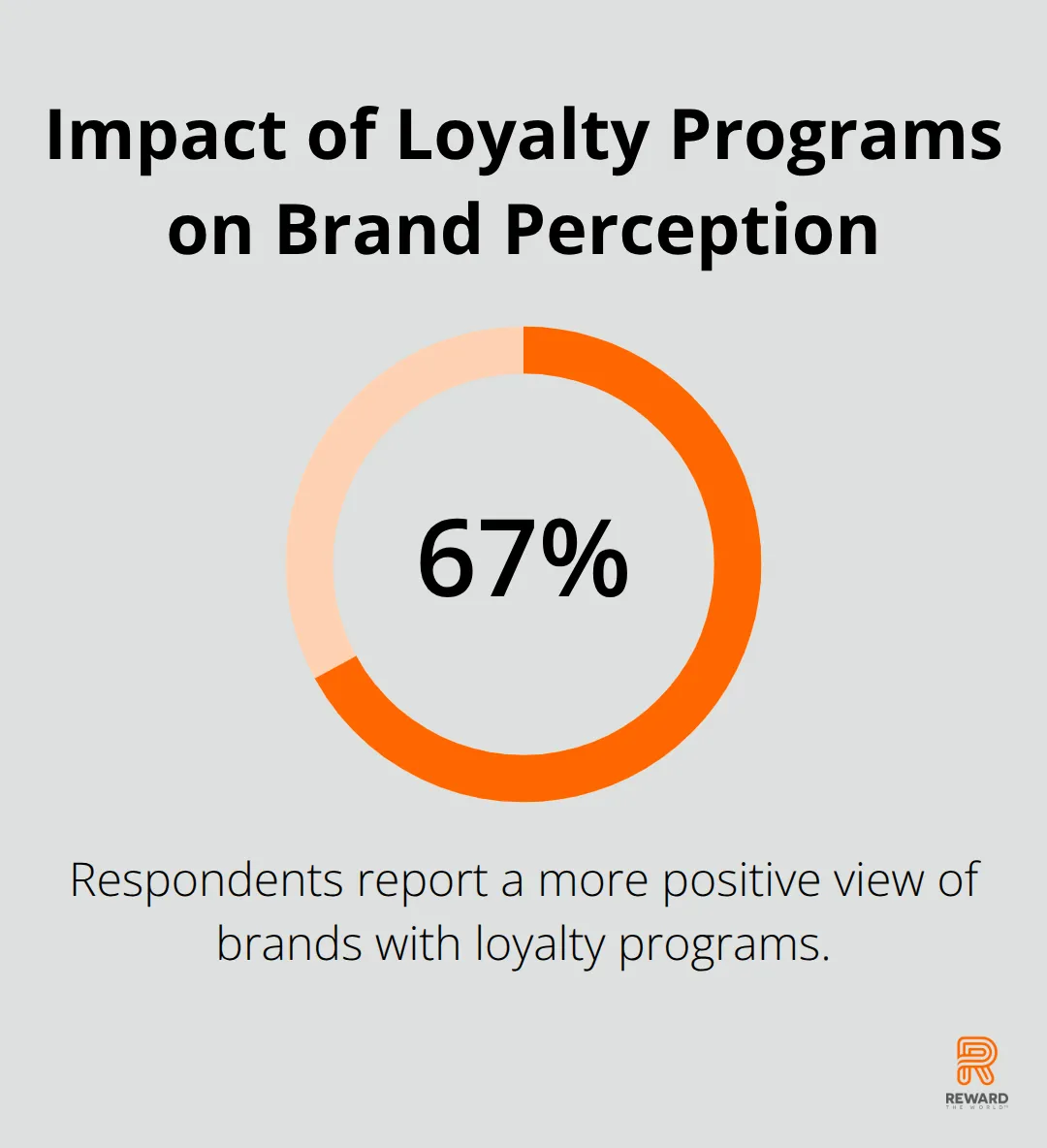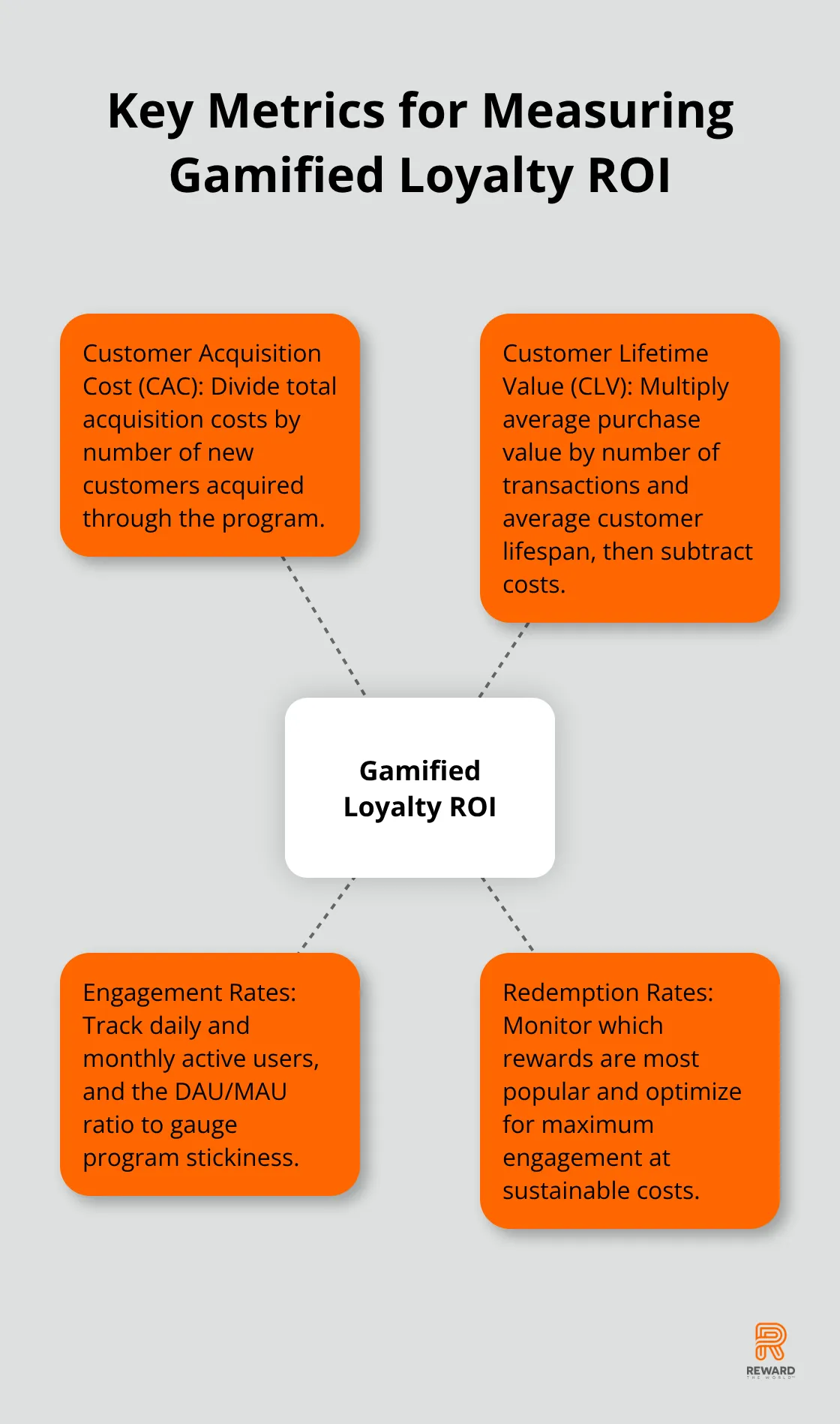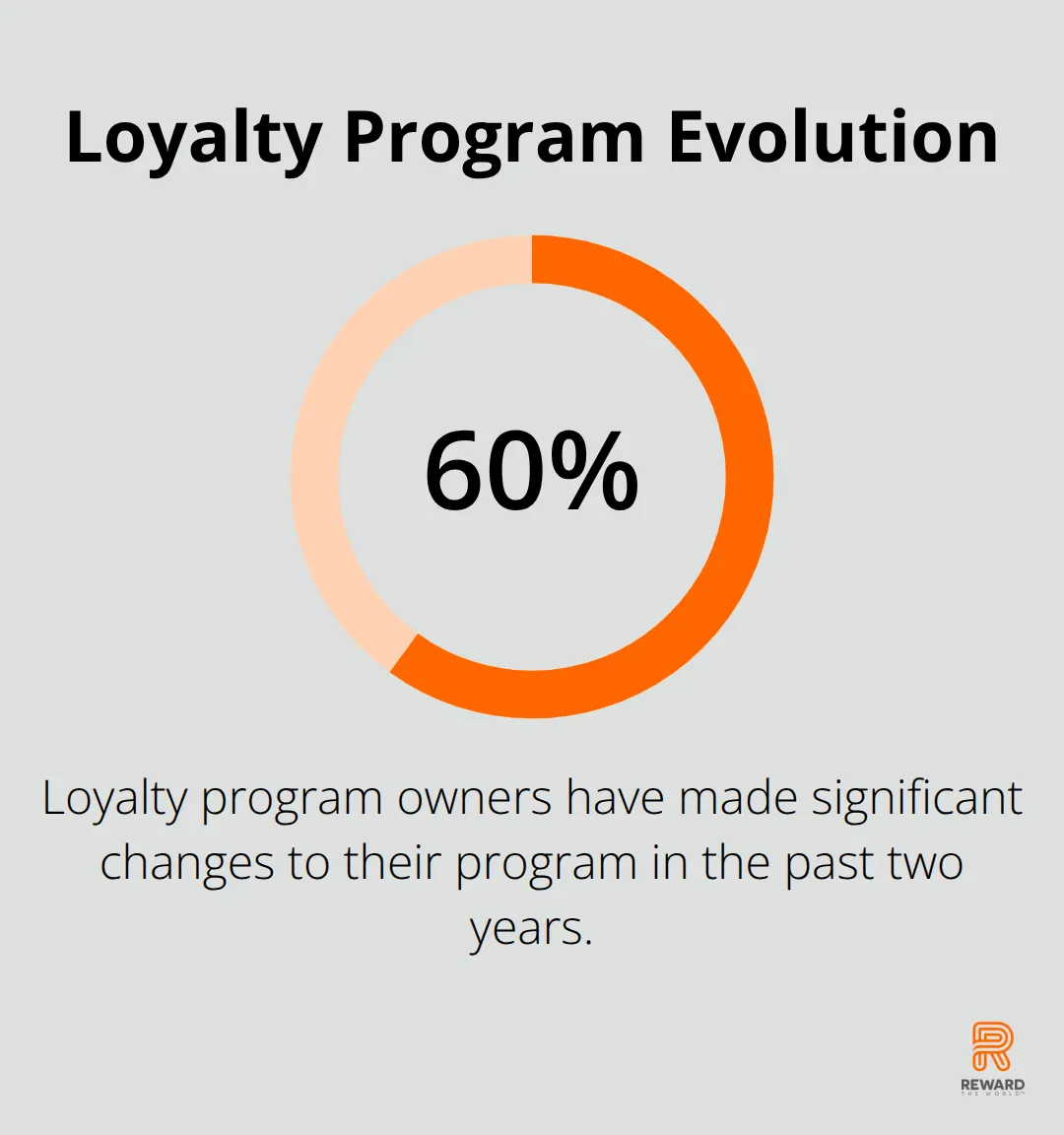
Gamified loyalty programs have revolutionized customer engagement strategies. At Reward the World, we’ve seen firsthand how these programs can boost retention and drive revenue growth.
However, measuring the true gamification ROI remains a challenge for many businesses. This post will guide you through the key metrics and methods to accurately assess the impact of your gamified loyalty initiatives.
What Are Gamified Loyalty Programs?
The Evolution of Customer Engagement
Gamified loyalty programs represent the cutting edge of customer engagement strategies. These programs blend traditional loyalty mechanics with game-like elements to create an interactive and enjoyable experience for customers. Across various industries, these programs have proven to boost customer retention and drive revenue growth significantly.
Key Components of Gamified Loyalty
A well-crafted gamified loyalty program typically includes several core elements:
- Points Systems: A marketing tool used in mobile apps to promote repeat purchases, customer relationships, and provide incentives.
- Challenges: Time-bound tasks keep users engaged and motivated.
- Leaderboards: Healthy competition fosters increased participation.
- Rewards: Tangible benefits provide incentives for continued engagement.
The Loyalty Marketing Association’s 2024 study reveals that loyalty programs increase positive opinions of brands, with 67% of respondents reporting having a “generally more” to “far more” positive view.

Benefits for Businesses and Customers
For businesses, gamified loyalty programs offer a wealth of customer data. This information enables personalized marketing strategies, which can lead to increased customer retention rates. Customers benefit from:
- A more engaging shopping experience
- Exclusive rewards
- A sense of achievement
Gamification Elements in Action
Progress Bars
Sephora’s Beauty Insider program uses progress bars to show customers how close they are to reaching the next tier. This visual cue motivates additional purchases and keeps customers engaged with the program.
Surprise Rewards
Starbucks Rewards occasionally offers “Double Star Days,” which create excitement and drive traffic on specific days. These unexpected bonuses tap into psychological triggers, making the loyalty experience more addictive and rewarding for customers.
The Psychology Behind Gamification
Gamified loyalty programs leverage key psychological principles to enhance engagement:
- Achievement: Customers feel a sense of accomplishment as they progress through levels or complete challenges.
- Competition: Leaderboards and rankings spark a desire to outperform others.
- Reward anticipation: The promise of future rewards (both known and surprise) keeps customers coming back.
These psychological elements transform the loyalty experience from a transactional interaction into an engaging journey that customers want to continue.
As we explore the effectiveness of gamified loyalty programs, it’s essential to understand how to measure their impact accurately. The next section will discuss the key metrics for evaluating the return on investment (ROI) of these innovative customer engagement strategies.
How to Measure Gamified Loyalty ROI
At Reward the World, we understand the importance of accurately measuring the return on investment (ROI) of gamified loyalty programs. Let’s explore the key metrics that will help you evaluate the true impact of your loyalty initiatives.

Customer Acquisition Cost (CAC) in Gamified Programs
CAC is a fundamental metric that takes on new dimensions in gamified loyalty. An onboarding approach can increase customer lifetime value (CLV) by reducing churn, fostering loyalty, and encouraging long-term engagement with your brand. This can lead to a reduction in CAC as engaged customers become brand advocates, decreasing the need for costly acquisition campaigns.
To calculate CAC for your gamified program, divide the total cost of acquisition (including program development, marketing, and rewards) by the number of new customers acquired through the program. Compare this to your overall CAC to gauge the program’s efficiency.
Maximizing Customer Lifetime Value (CLV)
CLV is where gamified loyalty programs truly excel. Buyers aren’t interested in purely transactional benefits in your loyalty program anymore. This shift in customer expectations highlights the importance of focusing on engagement and long-term value creation.
To calculate CLV, multiply the average purchase value by the number of transactions and the average customer lifespan. Then, subtract the costs associated with serving the customer. For gamified programs, it’s essential to segment your CLV calculations by engagement levels to understand which gamification elements drive the most value.
Engagement Rates and Active User Growth
Engagement fuels gamified loyalty. This research paper aims to review the emerging concept of gamification, its literature and theoretical development along with a highlight on the present applications.
Track metrics like daily active users (DAU), monthly active users (MAU), and the DAU/MAU ratio to gauge the stickiness of your program. Pay close attention to which gamification elements (challenges, leaderboards, etc.) drive the most engagement and adjust your strategy accordingly.
Redemption Rates and Reward Fulfillment Costs
Redemption rates can be a double-edged sword. High rates indicate an engaging program but can also strain your budget. The key is to find the sweet spot.
Monitor your redemption rates closely and analyze which rewards are most popular. This data can help you optimize your reward structure for maximum engagement at sustainable costs. The goal is to create value for both your customers and your business.
These key metrics provide a comprehensive understanding of your gamified loyalty program’s ROI. This data-driven approach allows you to fine-tune your strategy, maximize customer engagement, and drive sustainable business growth. In the next section, we’ll explore how to calculate the true ROI by considering both direct and indirect benefits of your gamified loyalty program.
How Gamified Loyalty Impacts Your Bottom Line
Direct Revenue Boost
Gamified loyalty programs transform businesses by significantly increasing revenue. Recent statistics show that 60% of loyalty program owners have made significant changes to their program in the past two years, a 3.3 percentage point increase from last year. This increased engagement stems from the evolving nature of gamified elements.

To quantify this impact, compare the average transaction value and purchase frequency between program members and non-members. For instance, if gamified loyalty members spend $100 per transaction (compared to $60 for non-members) and shop 5 times a year (instead of 3), it results in a revenue increase of $320 per customer annually.
Word-of-Mouth Marketing Value
Gamified loyalty programs often convert customers into brand advocates. The Net Promoter Score (NPS) proves valuable in measuring this effect. A 7% increase in NPS reflects a significant shift in customer sentiment, directly impacting revenue.
Monitor the number of new customers referred by your loyalty program members. Assign a value to these referrals based on their lifetime value. For example, if each referral is worth $500 in lifetime value, and your program generates 100 referrals a month, it adds $50,000 in additional revenue monthly.
Long-Term Retention Impact
Retention represents a key strength of gamified loyalty. According to a recent report, a five percent increase in customer retention can boost profitability by 75 percent.
Compare your churn rate before and after implementing your gamified program. A reduction in annual churn rate from 20% to 15%, with each customer worth $1,000 annually, saves $50,000 per 1,000 customers.
Repeat Purchase Frequency
Repeat purchases serve as another critical indicator. Track the purchase frequency for loyalty members versus non-members. If loyalty members make 2 additional purchases per year at an average of $75 each, it adds $150 more per customer annually.
Cost Savings Through Efficiency
Gamified loyalty programs often lead to operational efficiencies. These programs can automate many customer service processes (e.g., reward redemption, account management), reducing labor costs. They also provide valuable customer data, which can streamline marketing efforts and reduce wasted ad spend.
Final Thoughts
Measuring gamification ROI requires businesses to track key metrics such as Customer Acquisition Cost, Customer Lifetime Value, and engagement rates. These insights allow companies to evaluate the effectiveness of their loyalty initiatives and make data-driven decisions. The impact of gamified loyalty programs extends beyond direct revenue increases, encompassing enhanced brand loyalty, word-of-mouth marketing, and long-term customer retention.
Advancements in loyalty program analytics and optimization will shape the future of customer engagement. Artificial intelligence and machine learning will personalize rewards and predict customer behavior, while augmented reality and virtual reality may offer new ways to engage customers. These technologies will revolutionize how businesses measure and enhance their loyalty programs.
Reward the World offers robust analytics and seamless integration to help businesses track their gamification ROI effectively. Our platform provides diverse reward options and global reach, enabling companies to create engaging loyalty experiences that drive measurable results. We strive to help businesses foster lasting customer relationships and achieve sustainable growth in today’s competitive market.
